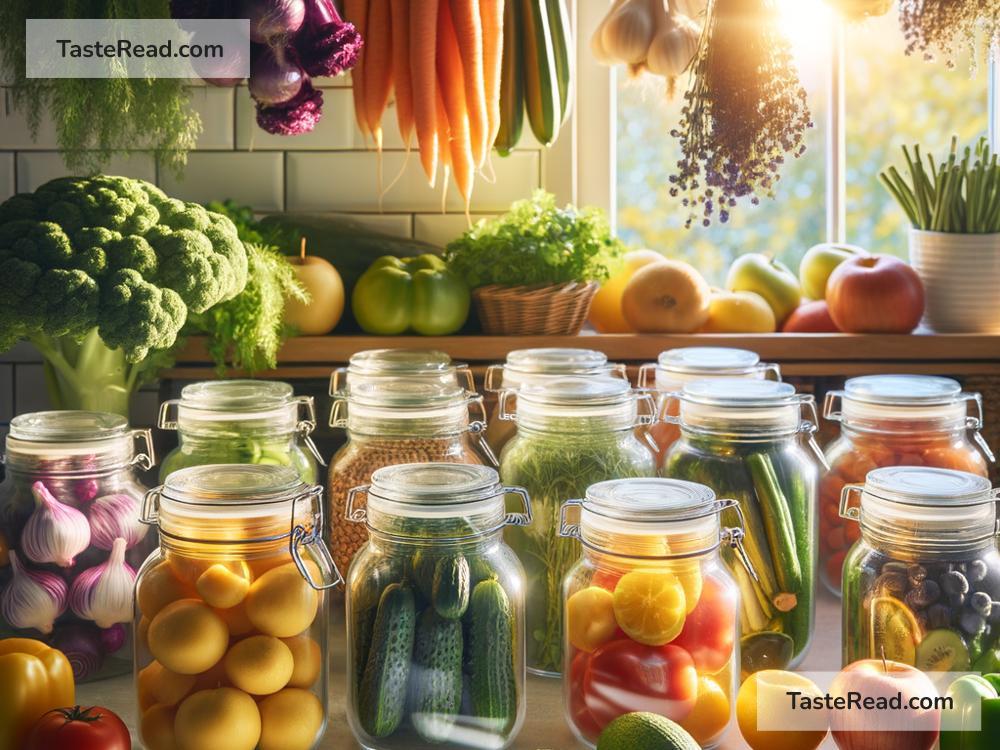Unlocking the Flavor: Cooking with Minimal-Energy Food Preservation Techniques
In our ever-busy world, the lost art of preserving food using minimal energy is finding its way back into the modern kitchen, not only as a crafty way to reduce waste and save money but also as a secret chef’s tool for unlocking flavors that are hard to conjure up through standard cooking methods.
You’re probably wondering, “How exactly does one preserve food using minimal energy?” And, “Does it really elevate the cooking experience?” Let’s dive into this culinary journey, exploring simple yet fascinating ways to preserve food and how these methods can accentuate your cooking, making it not just a process but an exploration of flavors.
The Magic of Minimal-Energy Preservation
Minimal-energy preservation methods are exactly what they sound like: techniques requiring little to no energy, except maybe a bit of your time and patience. These include drying, fermenting, curing, and canning using a water bath. Such methods have been used for centuries, allowing our ancestors to enjoy seasonal bounties all year round. Today, these techniques serve a dual purpose of sustainability and flavor enhancement.
Fermenting: The Flavorful Alchemy
Fermentation is a phenomenal process that introduces a whole new flavor profile to common ingredients. The age-old process of lacto-fermentation, where natural bacteria feed on the sugar and starch in the food, creating lactic acid, has gifted us with delights such as sauerkraut, kimchi, and sourdough bread. Not only does the fermentation process preserve these foods, but it also enriches them with probiotics, beneficial for our gut health. Incorporating fermented foods into your dishes can introduce a tangy depth that’s both refreshing and complex.
Drying: The Essence of Simplicity
Perhaps the simplest and oldest form of food preservation, drying is nothing short of magical. By removing moisture, you inhibit the growth of microorganisms that cause decay. Dried tomatoes, mushrooms, fruits, and even meats like jerky add a concentrated burst of flavor to dishes. Rehydrating these or adding them as-is into recipes brings out a richness that fresh counterparts might lack, especially when out of season.
Canning: The Art of Bottling Seasons
Canning might seem daunting with its sterilization and sealing process, but it’s incredibly rewarding. The basic principle involves cooking your food, packing it into jars, and then boiling these jars to kill off any bacteria. This process can preserve everything from jams and pickles to sauces and broths. Imagine opening a jar of summer peach jam in the middle of winter or adding your homemade marinara sauce to a pasta dish; canning allows you to bottle the seasonal flavors and enjoy them year-round.
Curing: The Salt of the Earth
Curing, using salt to preserve food, is an age-old technique that’s still widely used today. Salt draws out moisture and creates an environment where bacteria struggle to survive. Cured meats like bacon or prosciutto have a depth of flavor and texture that’s hard to replicate with fresh meats. Similarly, gravlax, a Nordic dish where salmon is cured with salt, sugar, and dill, offers an exquisite taste experience that’s both delicate and rich.
Bringing Minimal-Energy Preserved Foods into Your Kitchen
Now that we’ve unpacked some of the methods, let’s explore how these unique ingredients can elevate your cooking. Fermented foods can offer a tangy kick to your salad dressings or serve as a robust base for your soups. Dried fruits and vegetables can add sweetness and texture to your morning cereals or become the star of your stews. Using canned goods, whether jams for a sweet pairing with cheeses or pickles for an acidic punch in sandwiches, can transform an ordinary meal into something memorable. And let’s not forget how cured meats can enrich everything from pasta dishes to elegantly topped pizzas.
Conclusion
Cooking with minimal-energy preserved foods is not just a nod to sustainable living; it’s a doorway to exploring an array of flavors and textures that are otherwise hard to capture in everyday cooking. Whether it’s the tangy punch of kimchi, the sweet depth of dried tomatoes, the rich essence of canned sauces, or the salty sophistication of cured meats, these ingredients invite you to experiment and elevate your meals. So, dive into the world of minimal-energy food preservation, and let the preserved bounty inspire your culinary creations. Your kitchen will thank you, your palate will be intrigued, and the planet will be a bit happier too.


